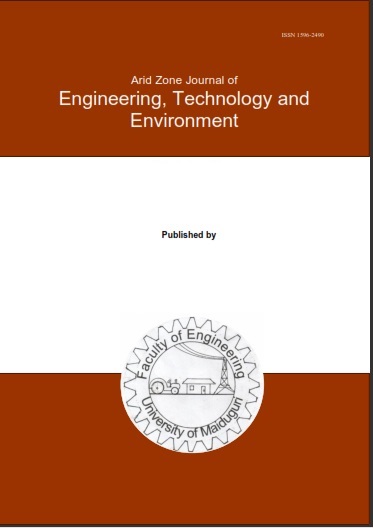Abstract
This study assesses the water resources potential within the Maiduguri catchment of the Lake Chad Basin by analyzing a 20-year using rainfall data between 1999 to 2018 and streamflow data between 1981 to 2000 (each over a 20 year period). The results indicates that monthly rainfall was generally higher between 1999 and 2011, followed by a significant decline from 2012 to 2018. This shift suggests a progressive extension of aridity from the Lake Chad region into the Sudan Savannah, likely influenced by the effects of climate change. Flooding events were recorded in 16 of the 20 years analyzed. Streamflow analysis of River Ngadda, which traverses Maiduguri, revealed an average discharge of 6,201.2 m³/s over the study period, with a 7-year span of flooding. Additionally, storage apportionment data were evaluated to inform water resource management in the region.

This work is licensed under a Creative Commons Attribution-NonCommercial-NoDerivatives 4.0 International License.
Copyright (c) 2025 ARID ZONE JOURNAL OF ENGINEERING, TECHNOLOGY AND ENVIRONMENT

